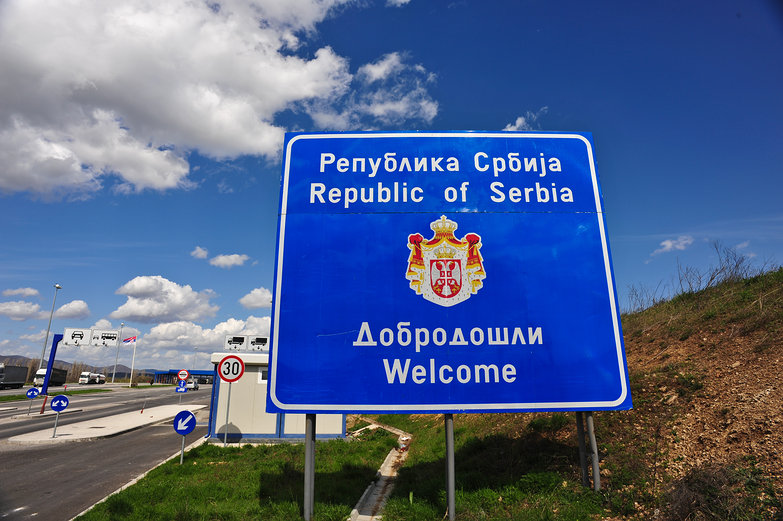In the long term, these obstacles may negatively influence foreign nationals’ decision to move to Serbia, impacting the country’s economic preparedness and resourcefulness. Specifically, the need to attract foreign workers is a priority given that Serbia is traversing an economic growth phase, with GDP projected to increase between 3% and 4% annually, and at the same time dealing with a rapidly ageing population. Welcoming foreigners, however, can go far beyond economic progress and initiate a process of mutual exchange of good practices, skills and cultures between Serbia and the rest of the world. Ultimately, building strong international connections is the answer to thrive in our challenging era in a world faced with environmental, geopolitical and economic crises.
The vision of cooperation beyond borders leaves many of us, like explorers in front of a foreign land, amazed with curiosity and, simultaneously, puzzled by uncertainties. To navigate this intricate topic, I will begin by mapping the services currently offered to foreign nationals coming to Serbia. First, on the eGovernment Portal, foreigners can use the consulate service to book an appointment online to speak with Serbian diplomatic and consular missions from their home countries. However, these services are advertised unevenly. For example, the Serbian Embassy in Australia and the Serbian Embassy in Kenya feature no link to access eGovernment services or register for an appointment at the consulate. Conversely, the Serbian Embassy in Germany presents a clear link for appointment booking. While this situation is challenging, interviews at the Ministry of Interior revealed that the scheduling service was mainly designed for Serbian citizens abroad and not to target foreign nationals directly.
Additionally, Serbian consular missions have a smaller role in processing visa applications, which are evaluated internally by the Government of Serbia. Reflecting on the highlighted issues, the limited accessibility of foreign nationals’ support tools showcases that these services need not simply exist to be effective. Still, that clear communication and advertisement about them are key to fully achieving their mission. On a positive note, this analysis has uncovered that public services for foreign nationals strive to constantly improve and evolve in Serbia, as demonstrated by the creation of appointment booking options in a system originally designed for Serbian citizens residing abroad.
Secondly, the Welcome to Serbia website is a project presenting important information foreign nationals need to prepare for their stay in Serbia. Currently, two versions of the website are active, with the risk of creating confusion for foreigners from the very beginning of their journey. On the one hand, the first version offers basic services such as connecting users to e-applications for visa, residence and work permits. Moreover, it features little adaptations to the needs of different groups of foreign nationals. For example, information in the FAQ section is mixed, and there are no sub-headings with specific resources concerning different groups of foreign nationals, such as those requiring a Visa and those who can stay in Serbia for less than 90 days without it.
On the other hand, the second version is a trial website with additional information, such as the cost of living in Serbia, education in Serbia, and an overview of visa categories. While the comprehensiveness of the second version better aids foreign nationals, this website is not easily accessible, as users are directed by default to the first version when searching for the keyword ‘Welcome to Serbia’ on Google. Overall, the parallelism and deficiencies of the official websites may even, in the short term, discourage people wanting to settle in Serbia from using them, reducing their propensity to apply and limiting the mutual benefits that foreigners and Serbia could gain from this process.
Parallel to having an informative function, the ‘Welcome to Serbia’ website allows users to access an online form to submit visa and residence applications. The website supports users as they prepare their application materials, but this guidance consists only of basic tips on application submission. For example, while each part of the application form features a ‘more information’ icon to clarify what data users need to provide, this function could be improved through more detailed explanations, such as providing templates for the documents users must fill and upload. Additionally, while the form provides a support email, this address only appears at the bottom of the application form’s homepage, and there is no reference to it after entering the application flow. Moreover, the form does not offer a phone number or virtual assistant for users to contact. In practical terms, the lack of guidance during the application process may lead to two types of obstacles, one being the difficulties of foreign nationals in completing each application step correctly and the other being the challenges of Serbian public servants to approve or deny applications, which have not been filled as needed.
Finding a job or relocating within a company is a major reason people migrate. Other foreign nationals need a permit to find employment in Serbia, except for citizens from other countries participating in the Open Balkan initiative. No further application or procedure is needed when a visa is granted based on employment, and a work permit is automatically granted. However, all other cases require a single permit application, which can be filed on the Welcome to Serbia website. The latest version of the single permit was introduced in February 2024 through the Law on Amendments to the Law on Employment of Foreigners. The rationale behind the law was to create a ‘one-stop-shop’ for foreigners interested in finding a job in Serbia, which would allow them to work and facilitate visa and residence applications. In particular, the platform assesses users’ visa requirements, and once these have been fulfilled, it directs foreigners to a single permit application. Ultimately, these developments showcase that Serbia’s public administration is aware that the comprehensiveness of service delivery is a key factor in ensuring a smooth and empowering user experience.
The overall procedure welcomes foreign workers to Serbia while also focusing on the interests of Serbian citizens through a labour market test, assessing whether there are qualified unemployed Serbian citizens who could work instead of hiring a foreigner. While tools like the labour market test can be helpful for Serbia, the position that foreign nationals hold in this process is constantly evolving and improving. This is evident when considering that single permit validity was originally set at 12 months and that this timeframe has been extended to 36 months through the aforementioned amended law. Moreover, employers can hire a larger number of employees (up to 50 through a single procedure), with the requirement to provide them with a final employment contract before the issuing of the permit. This provision is especially relevant as it adds predictability to the single permit application process, where employers and employees are certain that job openings will be assigned to selected candidates with pre-established contractual benefits and conditions. Ultimately, the single permit is a successful example of a policy that balances the needs of Serbian and foreign citizens, building a trajectory of cooperation and mutual growth.
The analysis of Serbia’s services for foreigners converges on three lessons:
- Lesson 1: Successful public services achieve their goals not just by existing but also because they can reach various users. To optimise its functioning, Serbia’s eGovernment portal should address challenges such as unequal coordination with Serbian embassies in informing citizens about services. For example, this could be achieved by sharing updated guidelines on service delivery with embassies and introducing a system of deadlines and rewards when these institutions adhere to such guidelines.
- Lesson 2: Tailoring public services is crucial in effective delivery, especially when dealing with a diverse group of users. While the ‘Welcome to Serbia’ website already has some tools that respond to the situations of different foreign nationals, some issues persist in adapting information to these audiences. To improve, changes could be made to the FAQ section, providing organised sections and complementing written information with graphical visualisation tools.
- Lesson 3: balancing the interests and needs of every group involved in designing and complying with policies for foreign nationals is paramount to achieving results. The introduction of a single permit for working and residing in Serbia is an exemplary demonstration of this observation.
Overall, moving closer to addressing these challenges will not just perfect foreign citizens’ journey when moving to Serbia. Still, it will also represent an opportunity for collaboration, enrichment, and diversification to bring Serbia closer to becoming more international and globally influential.








